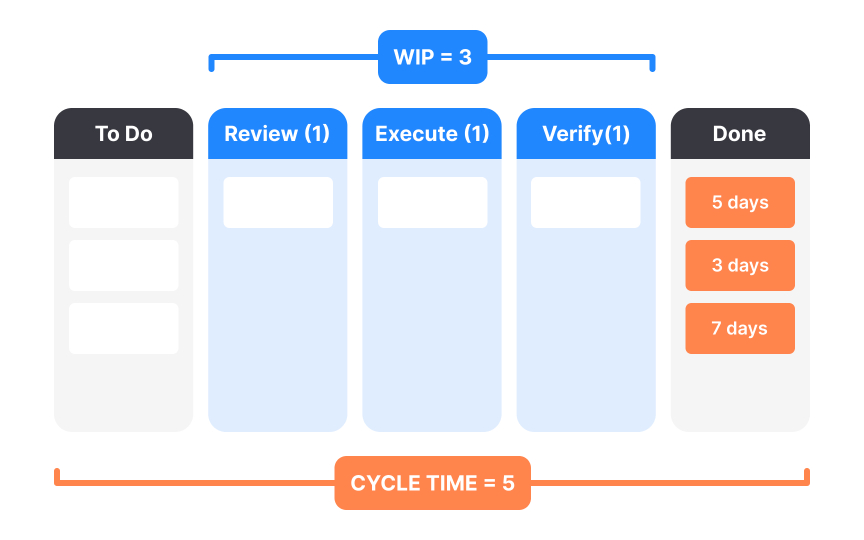Measuring cycle time in Kanban
Cycle time measures how long work takes to flow through a team's active process, from start to finish. For Kanban teams, this metric indicates process health and efficiency, showing how quickly they turn customer requests into delivered value. Unlike Scrum velocity, which measures output per sprint, cycle time focuses on individual items flowing through the system. This works especially well for teams handling varied work types where story point estimation might be inconsistent. Teams track cycle time by recording when items enter and exit their workflow. Many teams use charts showing cycle time distribution or highlighting items that took significantly longer than average.
Target cycle times help set realistic stakeholder expectations. Instead of promising specific delivery dates for each request, teams might commit to service levels: "85% of high-priority bugs are resolved within three days" or "New features typically take 10-15 days to complete." Rising cycle times signal process problems that need attention. Common causes include increasing work complexity, growing technical debt, or scope expansion during development.
Pro Tip: Break down cycle time by work type and priority. Emergency fixes, standard features, and infrastructure work should have different targets based on their complexity.

